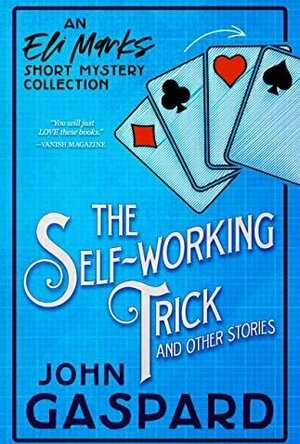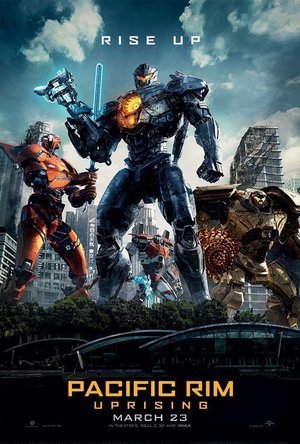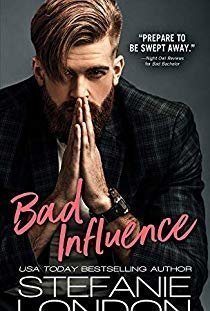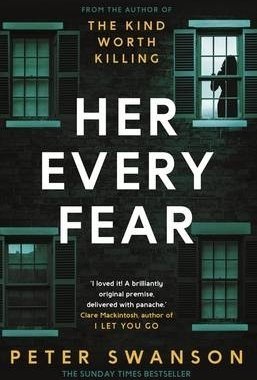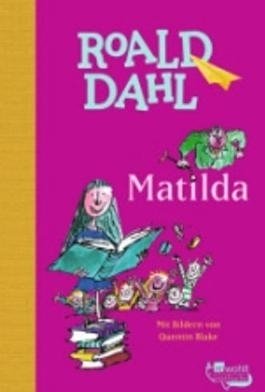Search
Search results
Bob Mann (459 KP) rated Halloween (2018) in Movies
Sep 28, 2021
“He’s waited for me; I’ve waited for him”.
A blood-soaked history.
There’s such a familiarity with the content of these films that it’s difficult to put yourself back in 1978 for Jamie Lee Curtis‘s original battle with Michael Myers when the teen-slasher genre was in its infancy. Arguably “The Texas Chain Saw Massacre” four years earlier booted the 70’s/80’s genre; but thanks to its huge success John Carpenter’s “Halloween” opened the flood-gates… or should I say, blood-gates.
The plot.
40 years after the terrifying events of Halloween night in Haddonfield, Illinois, Michael Myers is still mute and incarcerated in a psychiatric unit being studied by Dr Sartain (Haluk Bilginer). He is joined by two investigative journalists – Aaron Korey (Jefferson Hall) and Dana Haines (Basingstoke’s-own Rhian Rees: “Where are your loos?”… classic!). They are keen to reunite Myers with his nemesis Laurie Strode (Jamie Lee Curtis) to watch the fireworks.
Strode is unfortunately damaged goods: still mentally traumatised and with failed marriages and a child taken into care, she lives in a fortified home in the middle of the woods. But she knows she has a date with destiny. As Halloween 2018 approaches, an ‘incident’ puts Myers on a collision course with Haddonfield’s teenage population all over again.
The turns.
Wow… you forget what an effective actress Jamie Lee Curtis is and here she absolutely owns every single scene she’s in, bringing enormous energy to the screen as the paranoid but ever-prepared hunter-in-waiting. The original Halloween was Lee Curtis’s movie debut and the film that made her a household name, and it almost feels like this is a passion-project for her to say “thanks for all the fish” for her career. Impressive.
As her eye-rolling daughter, Judy Greer rather pales in comparison (I found her character is a bit whiny and annoying), but the acting stakes pick up again with Andi Matichak as the granddaughter Allyson.
Of the other teens, Virginia Gardner is particularly effective as Vicky: the cute “favourite” babysitter who you can’t help but empathise with.
The review.
It’s very easy to make a very bad slasher movie, but this isn’t such a movie. Although having a wonderfully retro feel (when is the last time you saw “traditional” opening titles like this?) and despite mining every horror cliché known to man (ALWAYS look in the back seat when you get in a car!) it’s all obviously been done with loving care by the director David Gordon Green.
Above all, the director knows that what’s more scary than seeing violent murders is what your imagination can visualise happening off-screen. Don’t get me wrong, there is some SERIOUS gore meted out, with a few ‘cover your eyes’ moments. However, a good proportion of the violence is not shown, and very effective that is too, supported by Carpenter’s classic and insistent theme and some kick-ass foley work to add spice to your imagination!
The script (by the writing team of David Gordon Green, Danny McBride and Jeff Fradley) also wickedly plays with your darkest fear of where the plot *could* go if it wanted to: in a brilliant piece of misdirection (you’ll know the scene) your “OMG surely not” nerves twang and then un-twang with relief.
The script also works well to help you care about the teens on the menu, in much the same way as “Jaws” did with the tourists to Amity Beach.
Where the plot nearly lost me was in a rather daft twist before the final reel (which actually made more sense of what happened in the first reel, but was still hugely improbable). The ship rights itself fairly quickly (if messily) and normal order is resumed for the finale it deserves.
Final thoughts.
I’m not really a “horror nut” but this was popcorn horror of the best sort and I enjoyed it. Reverential to the original classic, it made for some entertaining reactions in the sparsely populated showing I attended: I imagine if seen in a packed auditorium on a Saturday night (or perhaps tomorrow night!) it would literally be a scream.
One’s thing for sure: when I got into my car in the dark cinema car park, I did take a sneaky look into the back seat!
There’s such a familiarity with the content of these films that it’s difficult to put yourself back in 1978 for Jamie Lee Curtis‘s original battle with Michael Myers when the teen-slasher genre was in its infancy. Arguably “The Texas Chain Saw Massacre” four years earlier booted the 70’s/80’s genre; but thanks to its huge success John Carpenter’s “Halloween” opened the flood-gates… or should I say, blood-gates.
The plot.
40 years after the terrifying events of Halloween night in Haddonfield, Illinois, Michael Myers is still mute and incarcerated in a psychiatric unit being studied by Dr Sartain (Haluk Bilginer). He is joined by two investigative journalists – Aaron Korey (Jefferson Hall) and Dana Haines (Basingstoke’s-own Rhian Rees: “Where are your loos?”… classic!). They are keen to reunite Myers with his nemesis Laurie Strode (Jamie Lee Curtis) to watch the fireworks.
Strode is unfortunately damaged goods: still mentally traumatised and with failed marriages and a child taken into care, she lives in a fortified home in the middle of the woods. But she knows she has a date with destiny. As Halloween 2018 approaches, an ‘incident’ puts Myers on a collision course with Haddonfield’s teenage population all over again.
The turns.
Wow… you forget what an effective actress Jamie Lee Curtis is and here she absolutely owns every single scene she’s in, bringing enormous energy to the screen as the paranoid but ever-prepared hunter-in-waiting. The original Halloween was Lee Curtis’s movie debut and the film that made her a household name, and it almost feels like this is a passion-project for her to say “thanks for all the fish” for her career. Impressive.
As her eye-rolling daughter, Judy Greer rather pales in comparison (I found her character is a bit whiny and annoying), but the acting stakes pick up again with Andi Matichak as the granddaughter Allyson.
Of the other teens, Virginia Gardner is particularly effective as Vicky: the cute “favourite” babysitter who you can’t help but empathise with.
The review.
It’s very easy to make a very bad slasher movie, but this isn’t such a movie. Although having a wonderfully retro feel (when is the last time you saw “traditional” opening titles like this?) and despite mining every horror cliché known to man (ALWAYS look in the back seat when you get in a car!) it’s all obviously been done with loving care by the director David Gordon Green.
Above all, the director knows that what’s more scary than seeing violent murders is what your imagination can visualise happening off-screen. Don’t get me wrong, there is some SERIOUS gore meted out, with a few ‘cover your eyes’ moments. However, a good proportion of the violence is not shown, and very effective that is too, supported by Carpenter’s classic and insistent theme and some kick-ass foley work to add spice to your imagination!
The script (by the writing team of David Gordon Green, Danny McBride and Jeff Fradley) also wickedly plays with your darkest fear of where the plot *could* go if it wanted to: in a brilliant piece of misdirection (you’ll know the scene) your “OMG surely not” nerves twang and then un-twang with relief.
The script also works well to help you care about the teens on the menu, in much the same way as “Jaws” did with the tourists to Amity Beach.
Where the plot nearly lost me was in a rather daft twist before the final reel (which actually made more sense of what happened in the first reel, but was still hugely improbable). The ship rights itself fairly quickly (if messily) and normal order is resumed for the finale it deserves.
Final thoughts.
I’m not really a “horror nut” but this was popcorn horror of the best sort and I enjoyed it. Reverential to the original classic, it made for some entertaining reactions in the sparsely populated showing I attended: I imagine if seen in a packed auditorium on a Saturday night (or perhaps tomorrow night!) it would literally be a scream.
One’s thing for sure: when I got into my car in the dark cinema car park, I did take a sneaky look into the back seat!

My Home Remote - Remote Control for HomeMatic
Lifestyle and Utilities
App
My Home Remote is a native application to control your HomeMatic installation as effortless as...
Mark @ Carstairs Considers (2456 KP) rated The Self-Working Trick (and Other Stories) in Books
Feb 2, 2022
Eli Faces Crime in This Short Story Collection
For the eighth book in the Eli Marks series, author John Gaspard decided to present a short story collection. While two have been previously released, the rest of the twelve stories here are new. Over the course of this collection, Eli must help his ex-wife and her new husband figure out what happened in a bizarre murder/suicide case. Eli finds himself being questioned by the police when someone who gave him a one-star review is found dead. Eli finds himself being sent in by the police to perform magic for a man who refuses to come out of his house. And Eli and his uncle Harry figure out what happened to a man shot in front of a crowd on Halloween night.
While a couple of the stories don’t feature a crime, they still give us a great chance to see Eli in action and let us get some insight into his character. The rest of the stories feature a crime, often with a perfect puzzle that only makes sense when Eli uses his knowledge of the principles of magic to solve it. If you want to be fooled by magic, you’ll be happy to know that these principles are discussed in such a way that the solution to the mystery makes sense, but the specifics of how a trick works aren’t ruined. I love that. Fans will love getting these small glimpses of what else Eli has been up to between the big cases we’ve already read about. If you are new to the character, you’ll find the information you need to follow these cases with nothing from the regular novels spoiled. Most importantly, these stories are fun, with a few laughs along the way as well. This is a completely enjoyable short story collection.
While a couple of the stories don’t feature a crime, they still give us a great chance to see Eli in action and let us get some insight into his character. The rest of the stories feature a crime, often with a perfect puzzle that only makes sense when Eli uses his knowledge of the principles of magic to solve it. If you want to be fooled by magic, you’ll be happy to know that these principles are discussed in such a way that the solution to the mystery makes sense, but the specifics of how a trick works aren’t ruined. I love that. Fans will love getting these small glimpses of what else Eli has been up to between the big cases we’ve already read about. If you are new to the character, you’ll find the information you need to follow these cases with nothing from the regular novels spoiled. Most importantly, these stories are fun, with a few laughs along the way as well. This is a completely enjoyable short story collection.
Daniel Boyd (1066 KP) rated Polar (2019) in Movies
Feb 7, 2019 (Updated Feb 7, 2019)
Extremely Polarizing
Wow, what a train wreck this turned out to be..
Think diet John Wick meets an immature, garish comic book full of pantomime villains and you have Polar. Sometimes you see a movie and can't help but wonder, "What the hell were they thinking?" Unfortunately this is one of those times. There are folks out there that have crafted a solid script and are struggling to get their movie funded and made, meanwhile there is low level trash like this being paid for and distributed by a huge platform like Netflix?! It is an outrageous and pretty sad state of affairs.
Without a doubt the worst part of this thing is the god awful assortment of villains. They are so annoying and infuriating in every scene they are in and only get worse as the movie goes on. Half the movie is spent following this massively irritating group as they hunt for Mads Mikkelsen's character and they are so unlikable, but not in the way that they are supposed to be. They all work for the main villain, who is inexplicably played by Matt Lucas from Little Britain. That's right, Vicky Pollard is this movie's main antagonist. He is god awful here and I genuinely don't even know what they were attempting to do with this character. Every scene that he is in feels like a discarded Little Britain sketch.
The one bright spot in the film is Mads Mikkelsen's turn as Duncan, the ex-hitman being hunted throughout the film by his ex-employers who serves as our main protagonist. I love seeing Mads in anything he appears in, so I actually found the scenes with him in them pretty enjoyable, and frankly they were the only thing that stopped this movie from being scored a pathetic 1/10.
Overall, this is total mess. It is the worst type of comic book movie and doesn't seem appealing to anyone over the age of 12. Please don't waste your time with this garbage, there are much better movies out there based on graphic novels that don't only cater to horny, brain-dead teenagers.
Think diet John Wick meets an immature, garish comic book full of pantomime villains and you have Polar. Sometimes you see a movie and can't help but wonder, "What the hell were they thinking?" Unfortunately this is one of those times. There are folks out there that have crafted a solid script and are struggling to get their movie funded and made, meanwhile there is low level trash like this being paid for and distributed by a huge platform like Netflix?! It is an outrageous and pretty sad state of affairs.
Without a doubt the worst part of this thing is the god awful assortment of villains. They are so annoying and infuriating in every scene they are in and only get worse as the movie goes on. Half the movie is spent following this massively irritating group as they hunt for Mads Mikkelsen's character and they are so unlikable, but not in the way that they are supposed to be. They all work for the main villain, who is inexplicably played by Matt Lucas from Little Britain. That's right, Vicky Pollard is this movie's main antagonist. He is god awful here and I genuinely don't even know what they were attempting to do with this character. Every scene that he is in feels like a discarded Little Britain sketch.
The one bright spot in the film is Mads Mikkelsen's turn as Duncan, the ex-hitman being hunted throughout the film by his ex-employers who serves as our main protagonist. I love seeing Mads in anything he appears in, so I actually found the scenes with him in them pretty enjoyable, and frankly they were the only thing that stopped this movie from being scored a pathetic 1/10.
Overall, this is total mess. It is the worst type of comic book movie and doesn't seem appealing to anyone over the age of 12. Please don't waste your time with this garbage, there are much better movies out there based on graphic novels that don't only cater to horny, brain-dead teenagers.
Lee (2222 KP) rated Pacific Rim: Uprising (2018) in Movies
Mar 27, 2018
More of the same... not that there's anything wrong with that
It's 10 years since the apocalypse was cancelled. The son of the man who uttered those immortal words is Jake Pentecost (John Boyega), currently doing anything but follow in his fathers footsteps. Scavenging fallen Jaegers for parts in order to sell to the highest bidder and living a carefree party lifestyle.
His hunt for a highly expensive Jaeger part leads him to a 15 year old girl called Amara, who is a bit of a mechanical hacking genius and has managed to use old spare parts she has scavenged (including the big one that Jake had his eye on) to build her own, much smaller, Jaeger. Rogue Jaegers are illegal, so after a bit of a tussle with one of the official, bigger Jaegers, Jake and Amara find themselves in trouble with the law. Thanks to Jakes sister stepping in though, they find themselves paying for their crime by being sent to the PPDC (Pan Pacific Defense Corps) where they begin training for a possible return of a Kaiju related world threat. And, coincidentally, one of those just happens to be right around the corner!
John Boyega manages to carry this movie with his lovable roguish charm for quite a while, in what is otherwise a pretty average movie. But, we're here for Jaegers and the Kaiju (well, I was anyway), and once that action kicks in, that's when the movie really steps up a gear. To be fair, if you enjoyed the original Pacific Rim, then you know exactly what you're in for and really should enjoy this second outing. For me, I enjoyed it just as much as the first.
Something that many other reviews have commented on is the fact that the fight scenes in Uprising tend to take place during daylight, whereas the original tended to favour night. I found the daylight scenes to be a huge improvement, allowing for much greater enjoyment of the incredible fight choreography on display, along with the gloriously detailed CGI destruction of Tokyo!
His hunt for a highly expensive Jaeger part leads him to a 15 year old girl called Amara, who is a bit of a mechanical hacking genius and has managed to use old spare parts she has scavenged (including the big one that Jake had his eye on) to build her own, much smaller, Jaeger. Rogue Jaegers are illegal, so after a bit of a tussle with one of the official, bigger Jaegers, Jake and Amara find themselves in trouble with the law. Thanks to Jakes sister stepping in though, they find themselves paying for their crime by being sent to the PPDC (Pan Pacific Defense Corps) where they begin training for a possible return of a Kaiju related world threat. And, coincidentally, one of those just happens to be right around the corner!
John Boyega manages to carry this movie with his lovable roguish charm for quite a while, in what is otherwise a pretty average movie. But, we're here for Jaegers and the Kaiju (well, I was anyway), and once that action kicks in, that's when the movie really steps up a gear. To be fair, if you enjoyed the original Pacific Rim, then you know exactly what you're in for and really should enjoy this second outing. For me, I enjoyed it just as much as the first.
Something that many other reviews have commented on is the fact that the fight scenes in Uprising tend to take place during daylight, whereas the original tended to favour night. I found the daylight scenes to be a huge improvement, allowing for much greater enjoyment of the incredible fight choreography on display, along with the gloriously detailed CGI destruction of Tokyo!
Carma (21 KP) rated Bad Influence (Bad Bachelors, #3) in Books
Jun 17, 2019
Annie is the brains behind the Bad Bachelor website. It has brought a myriad of emotions to women around NYC and beyond. Some people are for the site and others want her to shut it down for ruining lives. Either way Annie knows it is helping most women navigate the dating world and she doesnt want to take that away from them. She has firmly stayed out of the dating world since her relationship ended years ago when she chose her family over her relationship. Joseph is never far from her thoughts but that is as close as she wants him, until she knocks him into a pond by accident.
Joseph has returned home again after making a name for himself overseas. He hasnt stopped thinking about Annie much over the years, as his ex fiancé can attest to. He is hoping to get a chance to have a good heart to heart with her and apologize for leaving her the way he did. While contemplating his thoughts at their spot by the pond he literally bumps into his past.
Annie and Joseph didnt have a great conversational past and they both fully admit it. Now that theyve gotten a second chance will they make the best of it this time or fall back into their old habits? Annie doesnt want to fall back into her past, especially while she is being threatened by someone over the Bad Bachelors website but she needs Josephs help to find out who is behind the threats.
Bad Influence is the third book in the Bad Bachelor series and a great continuation of the storylines. I received an advance copy from Netgalley without expectation for review. Any and all opinions expressed are my own. A 4 ½ star read, personally I found some slower parts to the story but overall a very good read. You dont have to read in any order as each is a standalone but if you want background on the other 2 main couples and/or the website I would recommend starting with book one, Bad Bachelor.
Joseph has returned home again after making a name for himself overseas. He hasnt stopped thinking about Annie much over the years, as his ex fiancé can attest to. He is hoping to get a chance to have a good heart to heart with her and apologize for leaving her the way he did. While contemplating his thoughts at their spot by the pond he literally bumps into his past.
Annie and Joseph didnt have a great conversational past and they both fully admit it. Now that theyve gotten a second chance will they make the best of it this time or fall back into their old habits? Annie doesnt want to fall back into her past, especially while she is being threatened by someone over the Bad Bachelors website but she needs Josephs help to find out who is behind the threats.
Bad Influence is the third book in the Bad Bachelor series and a great continuation of the storylines. I received an advance copy from Netgalley without expectation for review. Any and all opinions expressed are my own. A 4 ½ star read, personally I found some slower parts to the story but overall a very good read. You dont have to read in any order as each is a standalone but if you want background on the other 2 main couples and/or the website I would recommend starting with book one, Bad Bachelor.
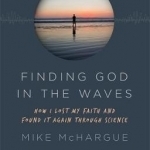
Finding God in the Waves: How I Lost My Faith and Found it Again Through Science
Book
'Through the lens of neuroscience, McHargue makes his case for valuing religion not for its factual...
Kristy H (1252 KP) rated Her Every Fear in Books
Feb 13, 2018
Kate Priddy suffers from anxiety. Neurotic since childhood, her recent fears have good reason: in college, Kate was attacked in a horrific incident by her boyfriend. It's taken Kate years to recover from that day. So when her parents tell her that her distant cousin, Corbin Dell, is looking to move to London and wants someone to switch apartments with for six months, Kate jumps at the chance. Six months in Corbin's spacious apartment will give her a chance to start her life over on her own. But shortly after arriving in Boston, Kate receives some unsettling news: the woman who lived down the hall, Audrey, is missing. She soon discovers that Audrey was murdered. Even worse, she realizes that Corbin is a suspect in Audrey's death. As Kate tries to adjust to life in Boston, she meets another fellow apartment-dweller, Alan Cherney. Alan claims he didn't know Audrey, but he seems to know a lot about her. Kate suddenly regrets her temporary move to the States, and soon she finds herself wondering if she's even safe there.
This novel was the first Swanson I've ever read. It starts off from Kate's perspective, but switches over after a couple of chapters to Alan, and we hear from Corbin and others throughout the story as well. While doing this, the story sometimes double backs to get the same perspective from a different character. While it's effective in showing different sides to one plot element, it seems to drag the story on, and make things repeat unnecessarily. I enjoyed the character of Kate, though couldn't always find myself attached to her. She was probably my favorite of the group, though. For me, I found some bits of the plot a little over the top (the list of things that have happened to Kate seems extreme, for example).
I guessed a good part of the mystery plot early on, but was still confounded by other pieces, so I did find it interesting, and it certainly had creepy pieces. Still, I wasn't incredibly invested in this one -- either the plot or the characters. Things just seemed a little "too much" at times, and then by the time we did get to the dramatic ending, it tied up really quickly, which was a little anticlimactic. Overall, this was a good thriller, but not great.
I received a copy of this novel from the publisher and Edelweiss (thank you!); it is available as of 1/10/2017.
This novel was the first Swanson I've ever read. It starts off from Kate's perspective, but switches over after a couple of chapters to Alan, and we hear from Corbin and others throughout the story as well. While doing this, the story sometimes double backs to get the same perspective from a different character. While it's effective in showing different sides to one plot element, it seems to drag the story on, and make things repeat unnecessarily. I enjoyed the character of Kate, though couldn't always find myself attached to her. She was probably my favorite of the group, though. For me, I found some bits of the plot a little over the top (the list of things that have happened to Kate seems extreme, for example).
I guessed a good part of the mystery plot early on, but was still confounded by other pieces, so I did find it interesting, and it certainly had creepy pieces. Still, I wasn't incredibly invested in this one -- either the plot or the characters. Things just seemed a little "too much" at times, and then by the time we did get to the dramatic ending, it tied up really quickly, which was a little anticlimactic. Overall, this was a good thriller, but not great.
I received a copy of this novel from the publisher and Edelweiss (thank you!); it is available as of 1/10/2017.
You will never be too old to read a Roald Dahl book!
I really enjoyed this book, it was funny but also sad at times.
Matilda is a young girl of 5 who is ignored and not really wanted by her family, she is very different from them, her father a used car salesman and a dodgy one at that, a mum who plays bingo, self obsessed and dishes up microwavable meals. Matilda has a thirst for knowledge and unknown to her parents she takes herself to the local library and teaches herself to read. Once she has devoured the children’s section she starts on adult books. At 5 years old Matilda has read probably more fiction than most adults.
She is finally sent to school and befriends Lavender and also captivates the heart of her teacher Miss Honey, however school is not all rosy as Matilda was hoping, there is a nasty headteacher called Miss Trunchball, an ex-olympian for the hammer throw, she has a low tolerance for children and practices with some of them.
Me and my daughter both thoroughly enjoyed this book and the favorite scene has to be with Bruce Bogtrotter and the chocolate cake. I love with Roald Dahl books is that the horrible characters i.e Miss Truchball get their comeuppence. The relationship between Miss Honey and Matilda is so lovely, they have such great outlooks on life even though they have been treated fairly poorly as children. Miss Honey is a very gentle character with a lot of love to give, as soon as she realises that Matilda is a gifted child she wants to help her with her studies and get her the level of education that she requires.
The only thing that let this book down was near the end when she is able to use her powers and the fact that her parents are leaving, it didn’t explain why they were leaving and her use of powers was very rushed.
I would have to say on this instance that I do find the movie adaptation to be better than the book, I think it is explained better and not as rushed, however saying that, in the book I found it interesting to read how she felt when using her powers. My Daughter who is 8 really enjoyed this book, she really enjoyed Miss Trunchball and as there is a lot of dialogue in the book, she was reading aloud with a nasty voice.
I really enjoyed this book, it was funny but also sad at times.
Matilda is a young girl of 5 who is ignored and not really wanted by her family, she is very different from them, her father a used car salesman and a dodgy one at that, a mum who plays bingo, self obsessed and dishes up microwavable meals. Matilda has a thirst for knowledge and unknown to her parents she takes herself to the local library and teaches herself to read. Once she has devoured the children’s section she starts on adult books. At 5 years old Matilda has read probably more fiction than most adults.
She is finally sent to school and befriends Lavender and also captivates the heart of her teacher Miss Honey, however school is not all rosy as Matilda was hoping, there is a nasty headteacher called Miss Trunchball, an ex-olympian for the hammer throw, she has a low tolerance for children and practices with some of them.
Me and my daughter both thoroughly enjoyed this book and the favorite scene has to be with Bruce Bogtrotter and the chocolate cake. I love with Roald Dahl books is that the horrible characters i.e Miss Truchball get their comeuppence. The relationship between Miss Honey and Matilda is so lovely, they have such great outlooks on life even though they have been treated fairly poorly as children. Miss Honey is a very gentle character with a lot of love to give, as soon as she realises that Matilda is a gifted child she wants to help her with her studies and get her the level of education that she requires.
The only thing that let this book down was near the end when she is able to use her powers and the fact that her parents are leaving, it didn’t explain why they were leaving and her use of powers was very rushed.
I would have to say on this instance that I do find the movie adaptation to be better than the book, I think it is explained better and not as rushed, however saying that, in the book I found it interesting to read how she felt when using her powers. My Daughter who is 8 really enjoyed this book, she really enjoyed Miss Trunchball and as there is a lot of dialogue in the book, she was reading aloud with a nasty voice.
Kirk Bage (1775 KP) rated Valerian and the City of a Thousand Planets (2017) in Movies
Jan 22, 2021
Where to begin with Luc Besson? The masterpiece of Leon aside, he is notorious for creating beautifully bonkers visual treats that twist and turn like a monkey on cocaine, making as much sense. This comic book adaptation starts well, with some jaw dropping CG design and a decent concept – it truly is a dreamscape of glorious colour and imagination rarely matched… but so is Tim Burton’s Charlie and the Chocolate Factory, and we all know how awful that is.
He just doesn’t have the knack with story and character in the same way as he does with the visuals, often leaving you with the impression that even the actors are confused by what is going on, and why, and what the hell is coming out of their mouths as an excuse for dialogue.
I like Dane De Haan, he has shown a lot of promise in some valiant near misses, such as Chronicle, The Place Beyond the Pines and The Cure For Wellness – three films I enjoyed, with reservations, that were better for him being in them – but he has not quite made it to the A-list as yet. Here, opposite the gorgeously cute but somehow hollow presence Cara Delevingne, he is burdened by a love story with no chemistry and some cringe-worthy banter. As the film ultimately focuses and depends on the likability of this relationship it inevitably fails; melting into comic book kookiness that loses a lot in translation.
I almost found myself hating them and wishing they would die painfully so the film could end, but not quite as much as I hated how fundamentally terrible Clive Owen was as the villain – I mean, so awkward and awful it made how uncomfortable Harrison Ford seemed in Ender’s Game look like an Oscar worthy performance. Risible. Inexcusable. Inexplicable. But that’s Besson where let loose into the realm of full sci-fi.
One corner of joy was Rihanna as the shape-shifting Bubble, who showed a charm and talent for film acting I hadn’t quite expected, and how much fun Ethan Hawke had dressing up and hamming it up as Jolly, her pimp. But essentially, you’d be better off turning the sound off completely and just drinking in the spectrum of imaginative design on display. A film that may hold some cult status into the future, and one small children may get oddly addicted to, but as a functioning and satisfying cinematic story… just, no.
He just doesn’t have the knack with story and character in the same way as he does with the visuals, often leaving you with the impression that even the actors are confused by what is going on, and why, and what the hell is coming out of their mouths as an excuse for dialogue.
I like Dane De Haan, he has shown a lot of promise in some valiant near misses, such as Chronicle, The Place Beyond the Pines and The Cure For Wellness – three films I enjoyed, with reservations, that were better for him being in them – but he has not quite made it to the A-list as yet. Here, opposite the gorgeously cute but somehow hollow presence Cara Delevingne, he is burdened by a love story with no chemistry and some cringe-worthy banter. As the film ultimately focuses and depends on the likability of this relationship it inevitably fails; melting into comic book kookiness that loses a lot in translation.
I almost found myself hating them and wishing they would die painfully so the film could end, but not quite as much as I hated how fundamentally terrible Clive Owen was as the villain – I mean, so awkward and awful it made how uncomfortable Harrison Ford seemed in Ender’s Game look like an Oscar worthy performance. Risible. Inexcusable. Inexplicable. But that’s Besson where let loose into the realm of full sci-fi.
One corner of joy was Rihanna as the shape-shifting Bubble, who showed a charm and talent for film acting I hadn’t quite expected, and how much fun Ethan Hawke had dressing up and hamming it up as Jolly, her pimp. But essentially, you’d be better off turning the sound off completely and just drinking in the spectrum of imaginative design on display. A film that may hold some cult status into the future, and one small children may get oddly addicted to, but as a functioning and satisfying cinematic story… just, no.

